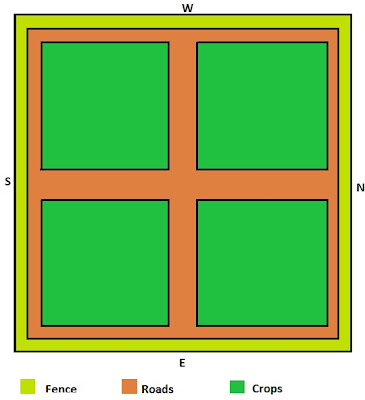In our Agriculture for Everybody blog series, we will concentrate on the crops section of the farm design. We will mainly concentrate on the design structure in this blog and we will see several permutations and combinations in the next blog.
The entire Crops Section have been further divided into alternative sections. The sections are called Trees Section & Open Space Section.
As the name suggests, the Trees Section will be utilized for growing Trees. The Trees can be grown in this section can be of Long Term Crops as well as Medium Term Crops.
The Trees Section can be utilized for growing Long Term Crops like Mango, Coconut, Tamarind etc as well as for Medium Term Crops like Moringa, Papaya, Banana etc.
The Open Space Section will be utilized for growing Short Term Crops like Vegetables, Flowers, Cereals, Millets etc.
Looking in a different way, we can simply say that any crops that grow in density (like Tomatoes, Paddy etc) will be grown in Open Space Section and some of the crops may even be called Medium Term Crops based on the longevity of the crops.
The entire Crops Section have been further divided into alternative sections. The sections are called Trees Section & Open Space Section.
As the name suggests, the Trees Section will be utilized for growing Trees. The Trees can be grown in this section can be of Long Term Crops as well as Medium Term Crops.
The Trees Section can be utilized for growing Long Term Crops like Mango, Coconut, Tamarind etc as well as for Medium Term Crops like Moringa, Papaya, Banana etc.
The Open Space Section will be utilized for growing Short Term Crops like Vegetables, Flowers, Cereals, Millets etc.
Looking in a different way, we can simply say that any crops that grow in density (like Tomatoes, Paddy etc) will be grown in Open Space Section and some of the crops may even be called Medium Term Crops based on the longevity of the crops.

